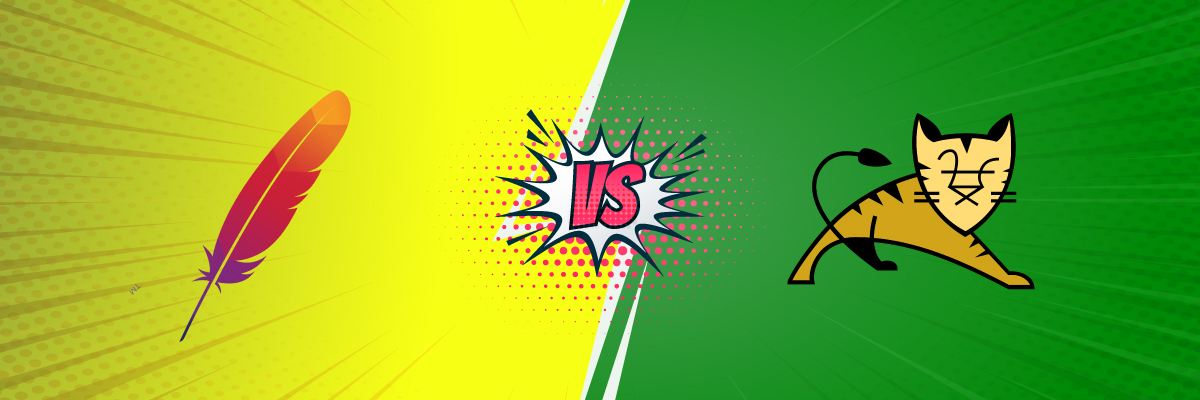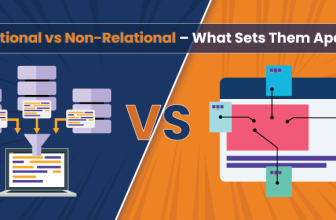Key Difference Between Apache Server vs Tomcat Server

Apache Server and Apache Tomcat Server are both developed and managed by Apache Software Foundation. An important differentiator between the two types of servers is that Apache Tomcat is a Servlet container environment, but Apache is an HTTP web server. Often Apache and Tomcat are mistaken to be the same due to the similarity in their names. This confusion arises from the fact that the term Apache has become an informal equivalent of Apache HTTP Server. Apache HTTP Server (AHS) was first launched in 1995 even before the establishment of the Apache Software Foundation.
In this blog, we will explore the key differences between Apache and Apache Tomcat Servers.
What is a Tomcat Server?
Apache Tomcat is an HTTP web server and servlet used for hosting Java-based applications on the web. Developed in 1998, it started as a reference for the first Servlet API and pages but today it is counted as one of the most preferred Javascript web hosting solutions.
It leverages Java technologies and makes use of Sun Microsystems’ Java Servlet and JavaServer Pages (JSP) for efficient content delivery. Tomcat facilitates communication between web servers and Java-based applications, enabling Java applications to create dynamic responses for users.
Key Features
- Tomcat’s memory leak detection and prevention feature fixes the common problems of memory leaks from the PermGen space. It removes references to objects so that it doesn’t get trash collected. It helps developers save the time they spend to deploy and redeploy new. WAR files without restarting Tomcat.
- Tomcat’s executor element lets the users configure thread pools that can be shared between various applications.
- Users can change the configuration to define multiple URL pattern elements.
- Tomcat supports Comet, which is a new HTTP push method, to transfer files over a socket connection. This offers a two-way sustained interaction for a persistent or long-lasting connection between the server and the client.
What is an Apache Server?
Apache is free and open-source web server software that powers the majority of websites all over the world. Apache HTTP or Apache Server permits website owners to publish content over the web. It is known to be the most dependable and long-standing version of the Apache web server.
Apache’s modular design makes it adaptable to diverse environments through its various extensions and modules. It empowers its users to build a web server that suits their needs, making it a popular choice for various environments. A majority of WordPress hosting providers use Apache. Companies like Paypal, Adobe, eBay, Linkedin, and Facebook rely on Apache Servers. Apache web server receives requests from web browsers like Google Chrome and Microsoft Edge and converts the programming languages into web pages that are readable by viewers.
Key Features
- Unix Threading – Backed by Unix systems and POSIX threads, Apache can work in hybrid multi-process and multi-thread modes. This allows the server to handle even complex configurations efficiently.
- Improved support for non-UNIX platforms – On Non-Unix platforms like Windows, AHS is even better and faster. With multi-processing modules and Apache Portable Runtime (ARP), it can be implemented in their native API’s too.
- Filtering – Apache modules can act like filters for the stream of content delivered to or from the server.
- Error responses in multiple languages – Apache uses SSI documents to generate multi-language error response messages. There is an option for customization by the administrator allowing you to create a uniform look and feel for the website.
- Easy configuration – Apache is easily configurable as it uses only the listen directive for IP address binding.
A Comparison of Apache and Tomcat Server
| Apache | Tomcat | |
|---|---|---|
| Purpose | Serves static files like HTML, text, images, videos, and audio to web clients. | Executes dynamic Java-based content and tailors responses based on user sessions and interactions. |
| Pre-requisites | Easy to install and compatible with Windows, Linux, and Unix platforms. | Requires Java Development Kit (JDK) and properly set JAVA_HOME environment variable. |
| Use Cases | Can serve dynamic content from apps in any language (e.g., Python, PHP). | Primarily designed for Java Servlets and JavaServer Pages (JSP). |
| Speed | Faster for serving static content. | Slower than Apache when serving static files due to dynamic processing overhead. |
| Configuration | Highly flexible with a broad range of configuration options. | Less flexible compared to Apache in configuration and module support. |
| Language | Written in C programming language. | Written in Java. |
Conclusion
If speed is your priority, Apache is the better choice; but if your preferred language is Java, Tomcat will be a good choice. Apache Tomcat and Apache HTTP Server can also be used together in some scenarios, where Apache HTTP acts as a front-end server and proxies dynamic content requests to Apache Tomcat. This setup is also referred to as using Apache as a reverse proxy for Tomcat. Finally, when comparing the two servers, one cannot be said to be necessarily superior to the other. Each of the servers excels in different things, depending upon the user’s needs.







